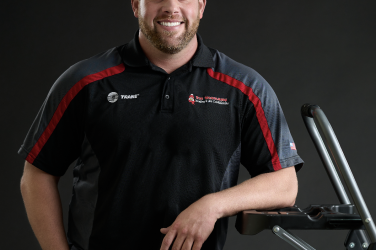
Q&A
Hospital
What’s a stroke?
A stroke is a brain attack, in many ways analogous to what may happen if an artery in the heart is blocked and causes a heart attack. In the case of the brain, there can be insufficient blood flow because of a blocked artery or a bleed. Strokes are very common; in fact, over 900,000 new strokes take place every year in the United States among adults. Of those, approximately 87% are the type where a blood vessel has been blocked acutely, or so-called ischemic strokes. The remaining 13% are the hemorrhagic strokes, and within this bleeding type of acute stroke, we find entities such as uncontrolled hypertension causing brain bleeds, bleeds related to ruptured brain aneurysms or sometimes bleeds related to a ruptured arteriovenous malformation in the brain
Who’s at risk for a stroke?
Strokes can affect anyone at any age however, we see it more in older populations. As we get older, the risk of strokes increases. Those who are 50 years of age and above, and especially those in their 70s, with certain risk factors, such as those with uncontrolled hypertension, poorly managed diabetes, abnormal heart rhythms such as atrial fibrillation, etc., are particularly at increased risk for a stroke.
What are the long-term outcomes of a stroke?
Short and long-term outcomes are much better than 15 years ago because of the more widespread availability of stroke centers like ours, offering eligible patients clot-busting intravenous medications. However, many stroke patients with big arterial blockages may also be candidates for emergent catheter-based interventions, a procedure called a mechanical thrombectomy; with minimally invasive techniques, we gain access into the patient’s bloodstream and navigate special tubes called catheters under X-ray guidance to physically reach the blocked vessel and remove or fix the occlusive lesion. Outcomes have significantly improved with these therapies. Patients require a team of experts to manage these conditions; this team includes not only neurointerventional specialists but also stroke neurologists and nurses, Intensive Care Unit specialists, physical, speech and occupational therapists, hospitalists, etc.
How quickly does a stroke victim need to see a medical professional?
As quickly as possible. There’s no fumbling around with this or sitting down to see if you feel better. You must call 911. As for symptoms you should watch out for, the American Heart Association has created an acronym called BE FAST. It stands for Balance (sudden dizziness or loss of balance), Eyes (sudden loss or changes in vision in one or both eyes, Face (facial droop, uneven smile), Arm (arm numbness or weakness, Speech (slurred speech, difficulty speaking, or understanding, and Time (time to get help immediately). The “T” can also be used to remember “Terrible headache,” in the case of a ruptured brain aneurysm.
What stroke therapies are available?
For my discipline, we can offer catheter-based intervention to remove the acute clot in a brain artery and restore blood flow. The goal is to halt the stroke and improve the patient’s chances of meaningful recovery and overall function. For bleeding strokes related to, for example, a ruptured brain aneurysm, we can also offer minimally invasive catheter-based interventions to seal the aneurysm. These patients require a multidisciplinary team for management, and such a team involves our partners from emergency medicine, neurosurgery, intensive care, neurology, and neurocritical care. In the scenario in which a patient has an unruptured brain aneurysm, we can offer elective treatments in a more controlled and nonemergent situation. These patients can be treated one day and discharged home the next day.
About The Expert

Juan Diego Lozano, MD
Director of Neurointerventional Surgery at Baylor Scott & White Medical Center — Grapevine











Show Comments